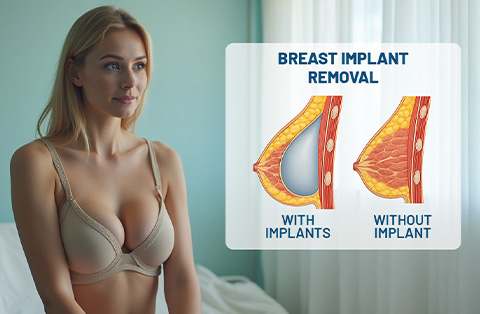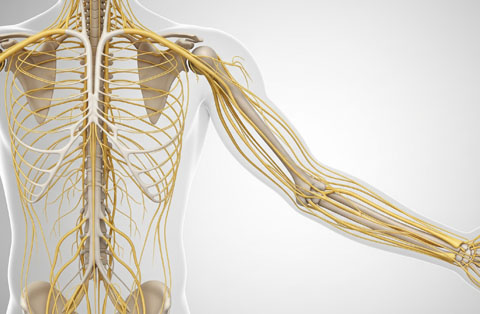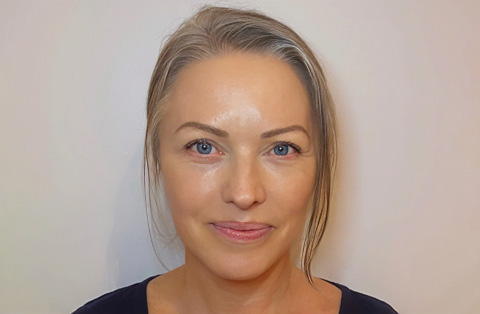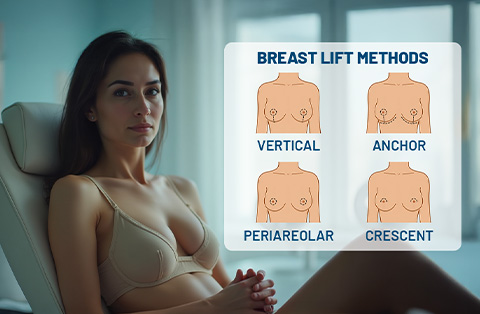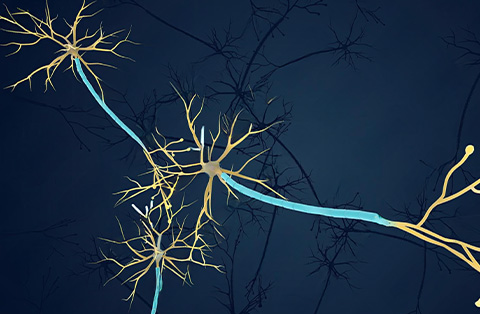Ramsay Hunt Syndrome and Bell’s Palsy cause sudden facial paralysis, but early diagnosis is key to recovery. Learn the differences, symptoms, and treatments to prevent complications and regain function.
What is Ramsay Hunt Syndrome?
Ramsay Hunt Syndrome (RHS) is a neurological condition caused by the varicella-zoster virus (VZV), the same virus responsible for chickenpox and shingles. It occurs when the virus reactivates and infects the facial nerve near the ear. This leads to facial paralysis and a painful rash in or around the ear.
RHS can affect both facial movement and hearing, sometimes leading to long-term complications if not treated promptly. It is more common in older adults and people with weakened immune systems.
What is Bell's Palsy?
Bell's Palsy is a condition that causes sudden, temporary weakness or paralysis of the facial muscles. It occurs when the facial nerve becomes inflamed, often due to a viral infection. The exact cause is unknown, but herpes simplex virus (HSV) is commonly linked to it.
Bell’s Palsy usually affects one side of the face, causing drooping, difficulty closing the eye, and loss of facial expression. Most cases resolve within a few weeks to months, and full recovery is common.
What are the key differences between Ramsay Hunt Syndrome vs. Bell's Palsy?
While both conditions cause facial paralysis, they have different causes, symptoms, and recovery patterns.
Causes: Herpes zoster virus vs. Unknown etiology
Ramsay Hunt Syndrome: Caused by the reactivation of the varicella-zoster virus (shingles).
Bell’s Palsy: Likely caused by viral inflammation, often linked to the herpes simplex virus.
Symptoms: Facial paralysis with ear rash vs. Isolated facial weakness
Ramsay Hunt Syndrome: Facial paralysis with a painful rash in or around the ear, possible hearing loss, dizziness, and ear pain.
Bell’s Palsy: Facial paralysis without a rash, often with mild ear pain or discomfort.
Associated symptoms: Hearing loss and vertigo in Ramsay Hunt Syndrome
Ramsay Hunt Syndrome affects the facial nerve, which is close to the inner ear. This can lead to additional symptoms like hearing loss and vertigo.
Hearing Loss: The virus can damage the auditory nerve, causing partial or complete hearing loss in the affected ear. In some cases, hearing loss may be permanent if not treated early.
Vertigo: Involvement of the vestibular nerve can lead to dizziness, imbalance, and a spinning sensation. This can affect daily activities and increase the risk of falls.
Early treatment with antivirals and steroids can help reduce these complications.
How do the symptoms of Ramsay Hunt Syndrome differ from Bell's Palsy?
The most noticeable similarity between Ramsay Hunt Syndrome and Bell’s Palsy is facial paralysis, but the underlying causes lead to key differences in symptoms. In Ramsay Hunt Syndrome, the varicella-zoster virus not only affects the facial nerve but also impacts nearby structures, leading to a broader range of symptoms.
One of the most significant differences is the presence of a painful rash in or around the ear, which is absent in Bell’s Palsy. This rash consists of fluid-filled blisters and is a hallmark of Ramsay Hunt Syndrome, helping to distinguish it from other causes of facial paralysis.
Hearing loss and vertigo are also common in Ramsay Hunt Syndrome due to the virus affecting the inner ear. Patients may experience partial or complete hearing loss in the affected ear, which in some cases can become permanent.
Additionally, vertigo can cause dizziness and balance issues, making daily activities more challenging. Bell’s Palsy, on the other hand, does not typically involve the inner ear, so these symptoms are much less common.
While both conditions can cause difficulty closing the eye on the affected side, Ramsay Hunt Syndrome may result in more severe nerve damage, increasing the risk of dry eye and irritation.
The overall recovery process is also different. Bell’s Palsy usually resolves more quickly, with most patients regaining full facial function within weeks to months. In contrast, Ramsay Hunt Syndrome has a lower chance of complete recovery, especially if treatment is delayed. The added complications of pain, hearing loss, and dizziness make Ramsay Hunt Syndrome a more severe condition compared to Bell’s Palsy.
What are the diagnostic challenges in distinguishing Ramsay Hunt Syndrome from Bell's Palsy?
Distinguishing Ramsay Hunt Syndrome (RHS) from Bell’s Palsy can be challenging, especially in the early stages when symptoms overlap. Both conditions cause sudden facial paralysis, making an initial diagnosis difficult without a detailed examination. However, the presence of certain key symptoms can help differentiate them.
One of the biggest challenges is that the rash associated with RHS may not appear immediately. In some cases, facial paralysis develops first, and the ear rash appears days later. This delay can lead to an initial misdiagnosis of Bell’s Palsy. If the rash is absent or subtle, a clinician must rely on other symptoms such as ear pain, hearing loss, and dizziness, which are more characteristic of RHS.
However, these symptoms can sometimes be mild or mistaken for unrelated issues, further complicating the diagnosis.
Another challenge is the variability in symptom severity. While RHS tends to cause more severe facial weakness and additional complications like hearing loss, individual cases vary. Some patients with Bell’s Palsy can also experience significant facial paralysis, making it difficult to distinguish between the two conditions based on severity alone.
Additionally, some patients with RHS may have only mild ear discomfort without obvious blistering, which can lead to underdiagnosis.
Diagnostic tests can provide more clarity but are not always definitive. A thorough clinical history, including previous chickenpox infection or shingles episodes, can be useful. PCR testing of fluid from the ear blisters, if present, can confirm the varicella-zoster virus in RHS cases.
In some situations, imaging such as MRI may be used to assess nerve inflammation, though this is not always necessary. Because early treatment is crucial for the best recovery, recognizing the subtle differences between these two conditions remains a significant diagnostic challenge.
Importance of early diagnosis for proper treatment
Early diagnosis is crucial for both Ramsay Hunt Syndrome (RHS) and Bell’s Palsy because timely treatment improves recovery outcomes and reduces complications. Since RHS is caused by the reactivation of the varicella-zoster virus, antiviral medications such as acyclovir or valacyclovir are most effective when started within 72 hours of symptom onset.
Delayed treatment increases the risk of permanent facial weakness, hearing loss, and prolonged pain. In contrast, Bell’s Palsy is primarily treated with corticosteroids, which also work best when started early. If misdiagnosed, a patient with RHS may not receive antivirals, leading to worse outcomes.
Proper diagnosis also helps manage additional symptoms. In RHS, hearing loss and vertigo can be severe, requiring supportive treatments such as pain management and vestibular therapy. Bell’s Palsy patients, on the other hand, may need eye protection to prevent corneal damage due to incomplete eyelid closure.
Without early intervention, both conditions can lead to long-term complications, but the risks are higher for RHS. This makes early and accurate diagnosis essential for ensuring the best possible recovery.
Clinical presentation similarities and differences
Ramsay Hunt Syndrome (RHS) and Bell’s Palsy share key clinical features, making diagnosis challenging without a detailed examination. Both conditions cause sudden facial paralysis on one side, affecting the ability to smile, blink, or move facial muscles. Patients may struggle with speaking and eating due to weakness in the lips and mouth. Eye problems, such as difficulty closing the eyelid and excessive tearing, are also common in both conditions.
However, RHS presents with additional symptoms due to the involvement of the varicella-zoster virus. A distinctive feature is a painful, blistering rash in or around the ear, which is absent in Bell’s Palsy. This rash may appear before, during, or after facial weakness, sometimes leading to an initial misdiagnosis. RHS is also more likely to cause severe ear pain, hearing loss, and vertigo due to the virus affecting the inner ear and auditory nerve. Bell’s Palsy, in contrast, does not typically involve these symptoms.
Another key difference is the severity and progression of symptoms. RHS often leads to more intense facial paralysis and a lower chance of full recovery, especially if treatment is delayed. Bell’s Palsy, while sometimes severe, generally has a higher rate of complete recovery within weeks to months. These distinctions in clinical presentation are critical for accurate diagnosis and effective treatment.
Facial Paralysis: Both Ramsay Hunt Syndrome (RHS) and Bell’s Palsy cause sudden, one-sided facial weakness or paralysis, making it difficult to smile, close the eye, or move facial muscles.
Pain and Rash: RHS is distinguished by a painful, blistering rash in or around the ear, caused by the varicella-zoster virus. Bell’s Palsy does not involve a rash, and while some patients may experience mild ear discomfort, it is not a primary symptom.
Hearing Loss and Vertigo: RHS often leads to hearing loss, ringing in the ears (tinnitus), and vertigo due to the virus affecting the inner ear and auditory nerve. Bell’s Palsy rarely involves these symptoms since it primarily affects the facial nerve without impacting hearing or balance.
Severity and Recovery: Facial paralysis in RHS tends to be more severe, with a higher risk of permanent nerve damage if not treated early. Bell’s Palsy usually has a better prognosis, with most patients recovering fully within weeks to months.
Recognizing these differences is essential for accurate diagnosis and timely treatment, which significantly impact recovery outcomes.
How does the treatment approach differ for Ramsay Hunt Syndrome and Bell's Palsy?
The treatment approach for Ramsay Hunt Syndrome (RHS) and Bell’s Palsy differs based on the underlying cause and severity of symptoms.
Antiviral Medications: RHS requires antiviral drugs like acyclovir or valacyclovir to target the varicella-zoster virus. These are most effective when started within 72 hours of symptom onset. Bell’s Palsy, which is often linked to viral inflammation but not specifically to the varicella-zoster virus, does not always require antivirals. However, some doctors prescribe them if a viral cause is suspected.
Corticosteroids: Both conditions are treated with corticosteroids like prednisone to reduce nerve inflammation and improve recovery. In Bell’s Palsy, steroids alone are often enough to achieve full recovery, while in RHS, they are used alongside antivirals.
Pain Management: RHS often causes severe ear pain, requiring additional pain relief with medications like ibuprofen or gabapentin. Bell’s Palsy usually does not cause significant pain, so pain management is less of a concern.
Eye Protection: In both conditions, patients may struggle to close the affected eye, increasing the risk of dryness and corneal damage. Artificial tears, lubricating ointments, and protective eye patches are recommended to prevent complications.
Hearing and Balance Support: RHS can cause hearing loss and vertigo, requiring additional treatments such as vestibular therapy and, in some cases, hearing aids. Bell’s Palsy does not typically require these interventions.
Early treatment is crucial for both conditions, but RHS requires a more aggressive approach due to its potential for more severe complications.
What is the prognosis for patients with Ramsay Hunt Syndrome compared to Bell's Palsy?
The prognosis for Bell’s Palsy is generally better than for Ramsay Hunt Syndrome (RHS). Most Bell’s Palsy patients recover fully within weeks to months, especially if treated early with corticosteroids. Around 70-80% of cases resolve completely without long-term complications. Some patients may experience mild residual weakness, but permanent nerve damage is rare.
In contrast, RHS has a lower chance of full recovery, particularly if treatment is delayed. Only about 50% of patients regain full facial function, even with prompt antiviral and steroid therapy. The severity of nerve damage, along with complications like hearing loss and vertigo, can lead to long-term issues. Some patients experience chronic pain, persistent weakness, or permanent hearing loss.
Early treatment significantly improves outcomes for both conditions, but RHS tends to have a more unpredictable recovery due to its broader nerve involvement.
Recovery timelines for facial paralysis
The recovery timeline for facial paralysis depends on the underlying condition and the severity of nerve damage.
Bell’s Palsy: Most patients begin to see improvement within 2-3 weeks of symptom onset. Full recovery typically occurs within 3-6 months, with about 70-80% of patients regaining complete facial function. Mild residual weakness may persist in some cases, but permanent paralysis is rare.
Ramsay Hunt Syndrome (RHS): Recovery is slower and less predictable. While some improvement may be seen within a few weeks, complete recovery can take several months. Only about 50% of patients fully regain facial movement, even with early treatment. If nerve damage is severe, some patients may have permanent weakness, lingering pain, or complications like synkinesis (involuntary muscle movements).
Early treatment with antivirals and corticosteroids improves the chances of recovery, but RHS generally has a longer and less favorable recovery timeline compared to Bell’s Palsy.
Long-term complications and potential sequelae
Both Ramsay Hunt Syndrome (RHS) and Bell’s Palsy can lead to long-term complications, but RHS carries a higher risk of permanent issues due to the broader nerve involvement.
Persistent Facial Weakness: Some patients with either condition may experience lingering facial asymmetry, muscle weakness, or difficulty with expressions. This is more common in RHS due to more severe nerve damage.
Synkinesis: This occurs when nerve fibers regrow incorrectly, causing involuntary muscle movements. For example, closing the eye may cause the corner of the mouth to move. It is seen in both conditions but is more frequent in severe cases.
Chronic Pain (Postherpetic Neuralgia): RHS can lead to long-lasting nerve pain around the ear and face, known as postherpetic neuralgia. This can persist for months or even years, making daily activities uncomfortable. Bell’s Palsy rarely causes chronic pain.
Hearing Loss and Tinnitus: RHS may result in permanent hearing loss or persistent ringing in the ear (tinnitus) on the affected side if the virus severely damages the auditory nerve. Bell’s Palsy does not typically affect hearing.
Balance Issues and Vertigo: Some RHS patients experience long-term dizziness or imbalance due to inner ear involvement. Bell’s Palsy does not usually cause these problems.
Eye Complications: Difficulty closing the eye can lead to chronic dryness, irritation, or corneal damage in both conditions. Patients may require ongoing eye care, including artificial tears or surgery in severe cases.
While Bell’s Palsy often resolves without major long-term effects, RHS has a higher likelihood of permanent complications, making early diagnosis and treatment critical.
Factors affecting prognosis in both conditions
Several factors influence recovery outcomes in Ramsay Hunt Syndrome (RHS) and Bell’s Palsy. The severity of nerve damage, timing of treatment, and individual health conditions play a significant role in prognosis.
Time to Treatment: Early treatment improves recovery in both conditions. Starting corticosteroids within 72 hours significantly increases the chances of full recovery in Bell’s Palsy. For RHS, early antiviral and steroid therapy can reduce complications, but delayed treatment increases the risk of permanent facial weakness and hearing loss.
Severity of Facial Paralysis: Complete facial paralysis at onset (no muscle movement) is associated with a poorer prognosis in both conditions. Patients with partial weakness tend to recover faster and more completely.
Presence of Additional Symptoms: RHS patients with severe ear pain, widespread rash, or significant hearing loss are more likely to have long-term complications. In Bell’s Palsy, patients with excessive nerve inflammation or multiple affected cranial nerves may recover more slowly.
Age and Overall Health: Younger patients generally recover better from both conditions. Older adults and individuals with weakened immune systems, such as those with diabetes or autoimmune diseases, have a higher risk of prolonged recovery and complications.
Electrophysiological Testing: In severe cases, nerve conduction studies (EMG) can help predict recovery chances. Poor nerve function on testing suggests a longer or incomplete recovery.
While Bell’s Palsy typically has a better prognosis, RHS is more unpredictable, with a higher risk of permanent effects, especially if treatment is delayed.
Are there any preventive measures for Ramsay Hunt Syndrome and Bell's Palsy?
Preventing Ramsay Hunt Syndrome (RHS) and Bell’s Palsy is challenging since both conditions are linked to viral infections. However, certain measures can reduce the risk and severity of these conditions.
Vaccination (RHS Prevention): The shingles vaccine (Shingrix) significantly reduces the risk of varicella-zoster virus reactivation, which causes RHS. It is recommended for adults over 50 and those with weakened immune systems. Since RHS results from shingles affecting the facial nerve, vaccination is the most effective prevention.
General Viral Infection Prevention: Both conditions are associated with viral infections, particularly herpes viruses. Maintaining good hygiene, avoiding close contact with individuals with active infections, and managing stress can help reduce the likelihood of viral reactivation.
Immune System Support: A strong immune system lowers the risk of viral reactivation. Eating a balanced diet, staying physically active, getting enough sleep, and managing chronic conditions like diabetes can help prevent both conditions.
Cold Weather and Facial Nerve Protection (Bell’s Palsy Prevention): Sudden exposure to cold temperatures and wind has been linked to Bell’s Palsy in some cases. Wearing protective clothing and avoiding direct exposure to cold drafts may help reduce risk.
Early Medical Intervention: If symptoms of shingles (pain, tingling, or rash) appear near the ear, seeking immediate treatment with antivirals may prevent progression to RHS. Similarly, early treatment of upper respiratory infections and other viral illnesses may reduce the risk of Bell’s Palsy.
While Bell’s Palsy has no specific preventive vaccine, lifestyle measures that reduce viral infections and inflammation can help lower the risk. For RHS, vaccination is the most effective prevention strategy.

